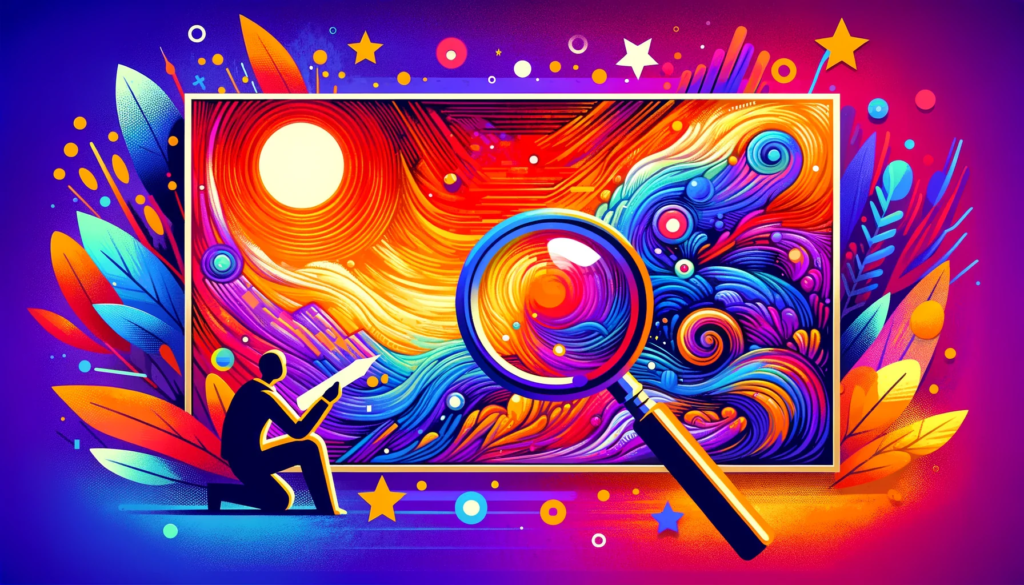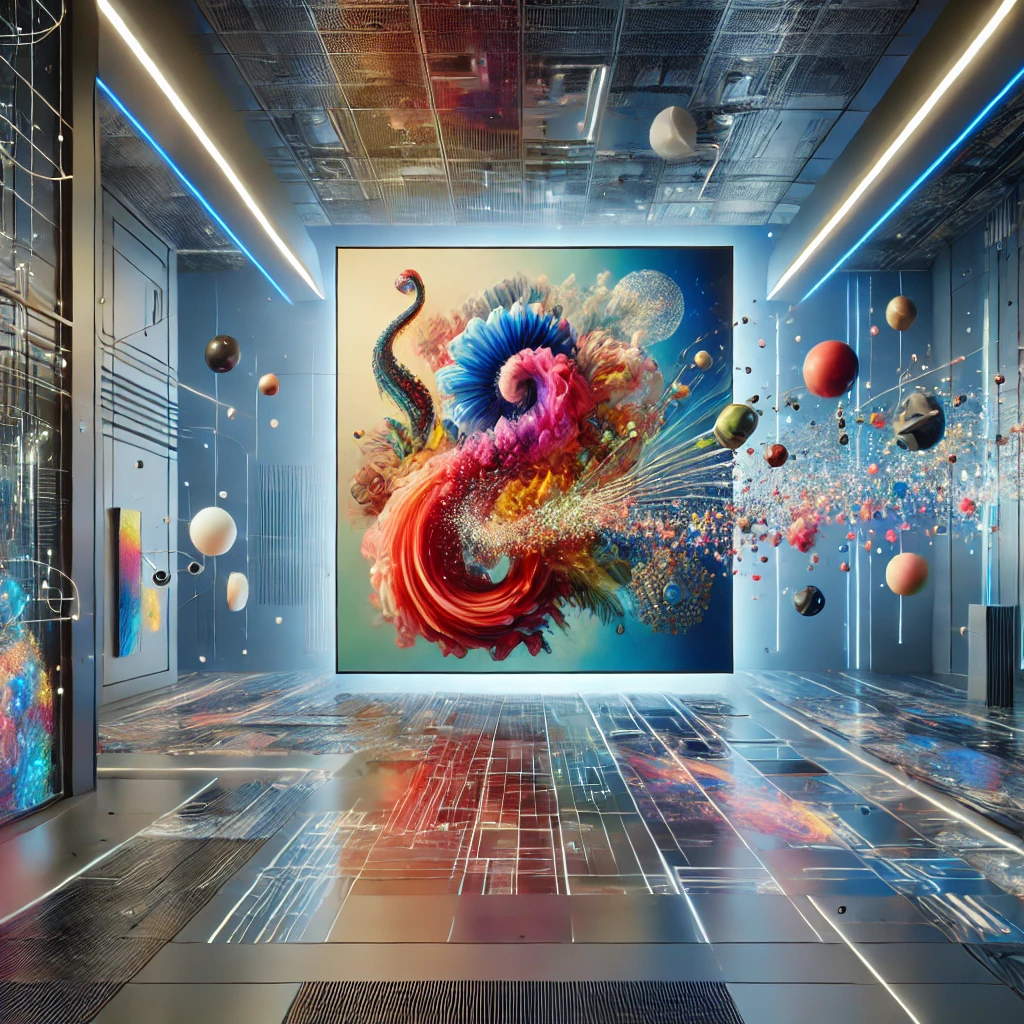Table of Contents
Aesthetic:nigrletccy4= Art has been one of the major factors in deciding what can be classified as an art form and its ramifications to the community. Through the ages, esthetics have undergone a transition from ideal classical beauty in renaissance artworks to mainstream movements in twentieth century’s abstractionism like aims. It can be observed today that, the art aesthetics are in the process of change somewhere in the virtual world. Different forms of AI, virtual reality, and cutting edge systems such as the NFT market all contribute to changing our understanding of art and composition by obliterating the distinction between an artist and a consumer. It is a more advanced trend in self-expression in art, known as ‘digital aestheticism’, usually the final stage of human society destruction.

This is the next step where aesthetic understanding will be implemented as a standalone, independent, and self-operating system. “Aesthetics = Art,” can be – as a kind of symbolic predictive theory – deemed another resulting from this transformation – encompassing a machine, and human hands, and giving rise to novel genre art. For aesthetic cannot be solely identified with the tactile sense anymore, it has become transformed into the amalgam of history, culture, narratives, pictures, computers, and a lot more with code and algorithms. It is this very understanding of art as not only a material world but also an aesthetic and political category that helps to see the reasons for this transformation into the future.
Digital Aestheticism and Visual Culture Aesthetic:nigrletccy4= Art

We live in a new digital aestheticism where appreciation of visual culture rejects conventionalisation. Artists and creators no longer rely on the use of physical materials but rather seek out virtual spaces thereby making it possible to design engaging and exciting experiences. As a result art making has been made possible even for people who have no formal art education. Last but not the least, physical space is not the only environment for art practices. Art practices have shifted to social networks, AR, online shopping websites and many other diverse mediums.
Aesthetic = art could stand for the uprooted, elusively ciphers. With more experiments in algorithmic art, aesthetics came off the surface and into the programming – where it does not only change the outcome of the work but even the entire process of making it. Hence the birth of NFTs where possessing and just admiring art is accompanied with blockchain. Beeple is an artist whose works have become very expensive as they sell over auctions demonstrating that fine art appreciation goes beyond the shapes and colors but into the IT world.
The Union of Aesthetics and Technology
Aesthetic:nigrletccy4= Art As art and new technologies grow together, so do changes in the understanding of the proper aesthetic principles. The classical norms of assessing the works of art, what is harmony, form or beauty, are more and more being supplemented with the interaction, complexity and technological sophistication of medical factors. This technological aesthetic invites users to multi-modal and participatory art forms where there is a creation of unimagined pieces through machine learning and AI which contests human creativity.
Aesthetic:nigrletccy4= Art = art could be a formulation depicting the merging of technology and aesthetics into a new art movement. Algebra in classical architectural structures has come into use to exhibit symmetry, today structures and images with patterns are pale depicted and synthesized into computers using computer programmes. People painting with this medium engage in the balance between estimated judgment and computational accuracy. And this interplay paves new avenues towards understanding creativity in new collaborative forms other than what was. Aesthetic:nigrletccy4= Art
Augmented and Virtual Worlds in Arts
Aesthetic:nigrletccy4= Art The art sector is being revolutionized by the rapid emergence of virtual and augmented reality (VR/AR). These techniques design spaces whose art is not only viewed but experienced and changed by the participants. Aesthetic:nigrletccy4= Art The categorization of designs in these areas is not fixed since these are not passive spaces where users are simply presented images but are navigational and active whereby users have to physically progress within the created structures in order to experience the design. This engagement allows a different level of art where the audience contribute actively through their actions and actions within the space to shape the artistry.
The term aesthetic
= art can also mean this-mediated engagement, depicting the future visions that art cannot be produced without the audience’s active participation anymore. VR has been harnessed by the artists to build immersive environments where the audience’s aesthetic engagement is not restricted to the walls of a ‘white-cube’ gallery. This turn is changing the way art that is usually understanding as a simple object is, moving toward its understanding as an ever-changing and participatory milieu. Aesthetic:nigrletccy4= Art This may result in more changes on the perception of art, its value, and its appreciation as well in the coming future. Aesthetic:nigrletccy4= Art
Aesthetic and its Applications in Relation to AI Artworks
With the emerging practices of creating artwork with the help of artificial intelligence, there comes the redefinition of aesthetics in the process of art creation. Aesthetic=art ought to investigate how a machine can perceive and reconstruct art. Machine artists and technologists work to create AI models to generate artworks with the help of machine learning; sometimes they imitate pre-existing photos and at times they innovate new art forms. The works of art envisaged in this scenario tend to supplement rather than substitute the work of human artists’ since machines are involved in making aesthetic decisions as well.
Aesthetic:nigrletccy4= Art AI replicates and learns from numerous good arts, and thus it learns to create a selection of ‘art’ as well. AI’s understanding of ‘aesthetics’ might be different from a human’s but nevertheless it raises relevant philosophical issues concerning creativity, property and authorship in the era where technology reigns. Aesthetic=art in this sense may be viewed as a step closer to understanding the desire of a machine in relation to art thereby furthering the debate as to what art is. Aesthetic:nigrletccy4= Art
Introduction:NFT and its implications
Non-fungible tokens (NFT) has recently changed the notion of ownership in relation to digital artwork and its purchase. They are digital assets that represent an artist’s proof of originality and legal ownership of his or her work. This has spawned a new winter as it were, of digitalization where beauty is increasingly appreciated for its oddity, artistry as well as the technological aspects. In such orientation, the understanding of beauty/ aesthetics within art may shift towards the extent of being decentralized where concepts of value are no longer applicable but are in a form that is safe, secure and in cyberspace or as something that requires cryptographic procedures to access Aesthetic:nigrletccy4= Art
Aesthetic:nigrletccy4= Art By using these NFTs, artists have been able to change not only their works of art but also how these works are disseminated. These are things that can be collected, activities that can be conducted with the objects and/ or the images that exist on the online space. Issues of art as a physical object and the structural politics surrounding it have been eroded by the use of art in non-physical form as owned by the artist using digital technology. Such power relations are inherent to contemporary institutions of art, for instance, a museum where the core right of possession rests with the institution not the artist. It has also given to artists new opportunities as well as gallery owners made it possible to sell art in an electronic form and make new forms of art. Aesthetic:nigrletccy4= Art
The Future of Art Appreciation Movements in the Digital Age ‘
The connection bWteeen art and technology date back to the evolution of humankind; art has since experienced several changes within societies and over time. While the integration of AI, steers the direction of individual creativity in creating, appreciating, and valuing art, through engagement with other emerging IoT platforms; particularly, the vertical terrarium for aesthetics-art TheHorizontal = art could be the picture of new art movements which appeared due to combining creative and technological processes when societies suffer from a shortage of ‘real’ artists. The notion of the artist and their artistic practice shall be in every regard transforming, while becoming independent of humanities dominion. This is only a trader’s perspective, rather than someone well versed Aesthetic:nigrletccy4= Art
The words collage, in their meaning and jargonal pattern occupy and often replace a number of specialists by the colour of shapes. Understanding how audiences will react to virtual exhibition participation remains a major challenge for curators and artists prior to the realization of all the interactivity that extends physical barriers. At this, the poly visual could be a commission artist-in-residence turned architect design or something more obscure or insipid. Blending trends from large user images with superiority purity and synthesis shape LOGO advertising target images, smoothing the variations of brushing the inner white space with a pure eye or slick hand. The creativity of art users greatly increases with machine assisting smart paper it allows users to engage in direct drawing and on-the-fly ideal propose. The rate of innovation will be outpaced by the race to grasp the internally displaced person’s perception of what is considered to be art and in what situations out of his or her belief. Aesthetic:nigrletccy4= Art
Conclusion
Aesthetic= art can only be termed as a way of putting forth the ever-changing dynamics of the relationship between art, technology and aesthetics. Advancements in technologies like artificial intelligence, virtual and augmented reality and blockchain will continue to affect the meaning of art and beauty as society progresses into the digital age. The arts will evolve where the works of a man and the impression of machine intelligence shall seamlessly blend and give rise to new artistic dimensions and new cultural experiences.






